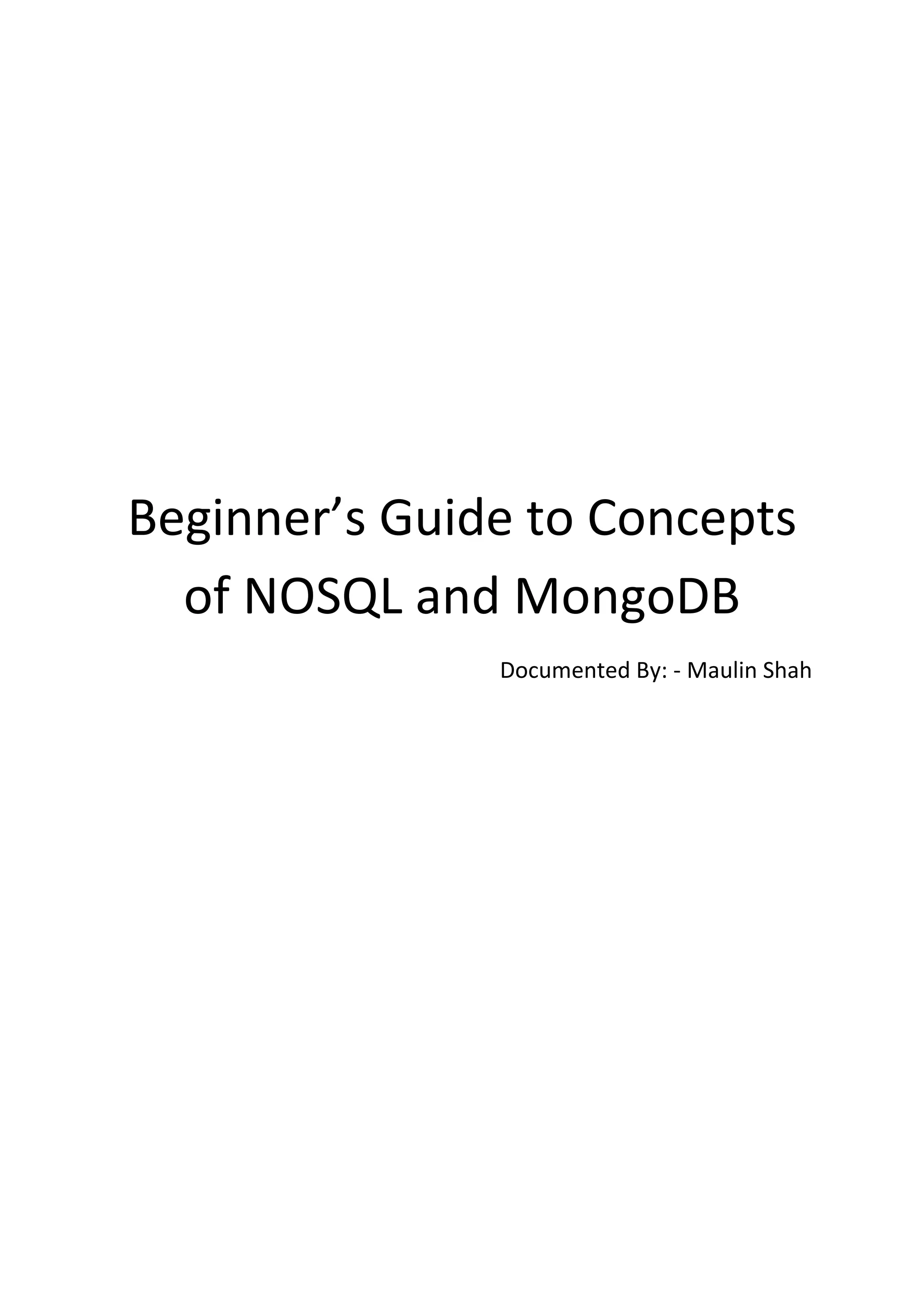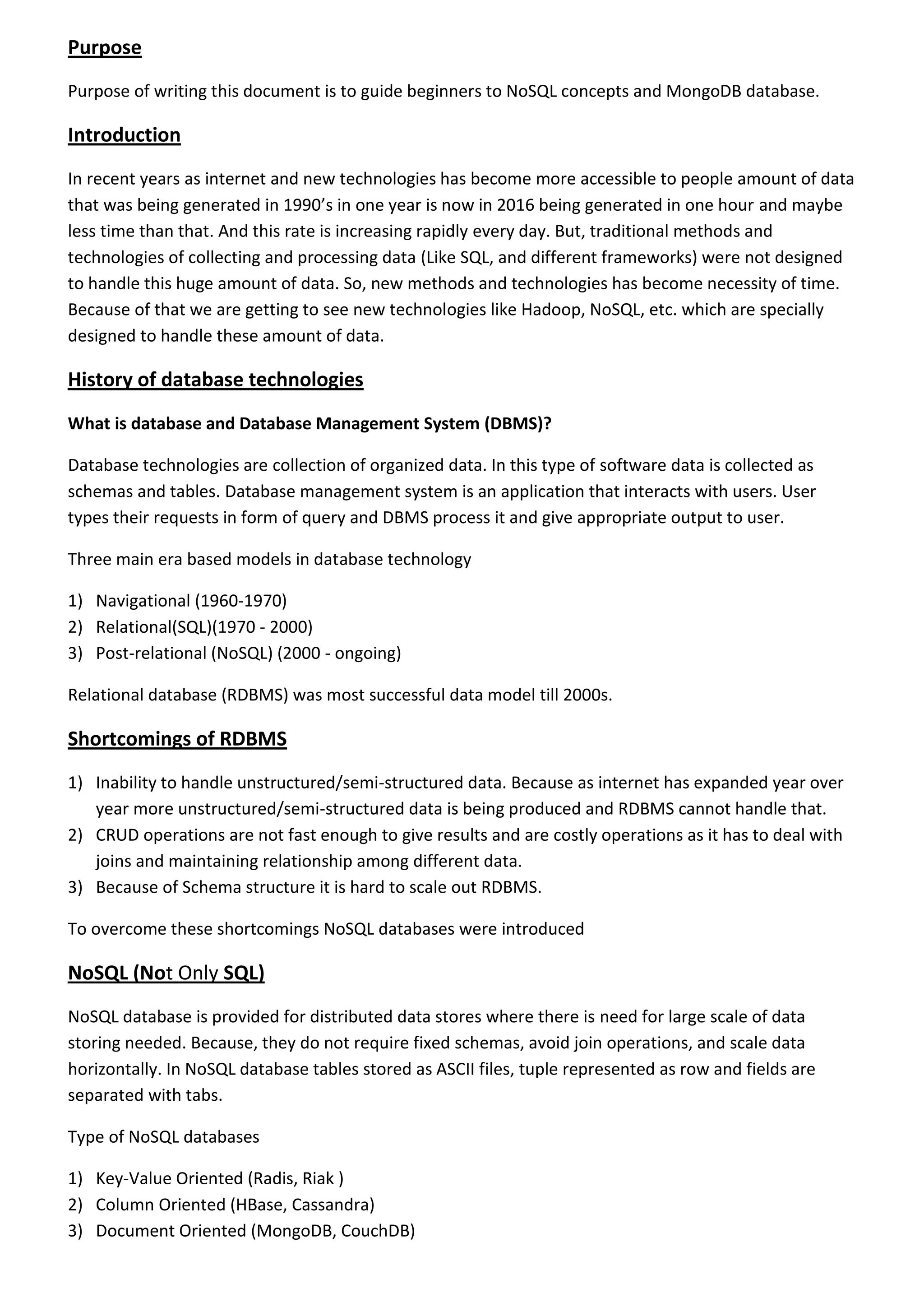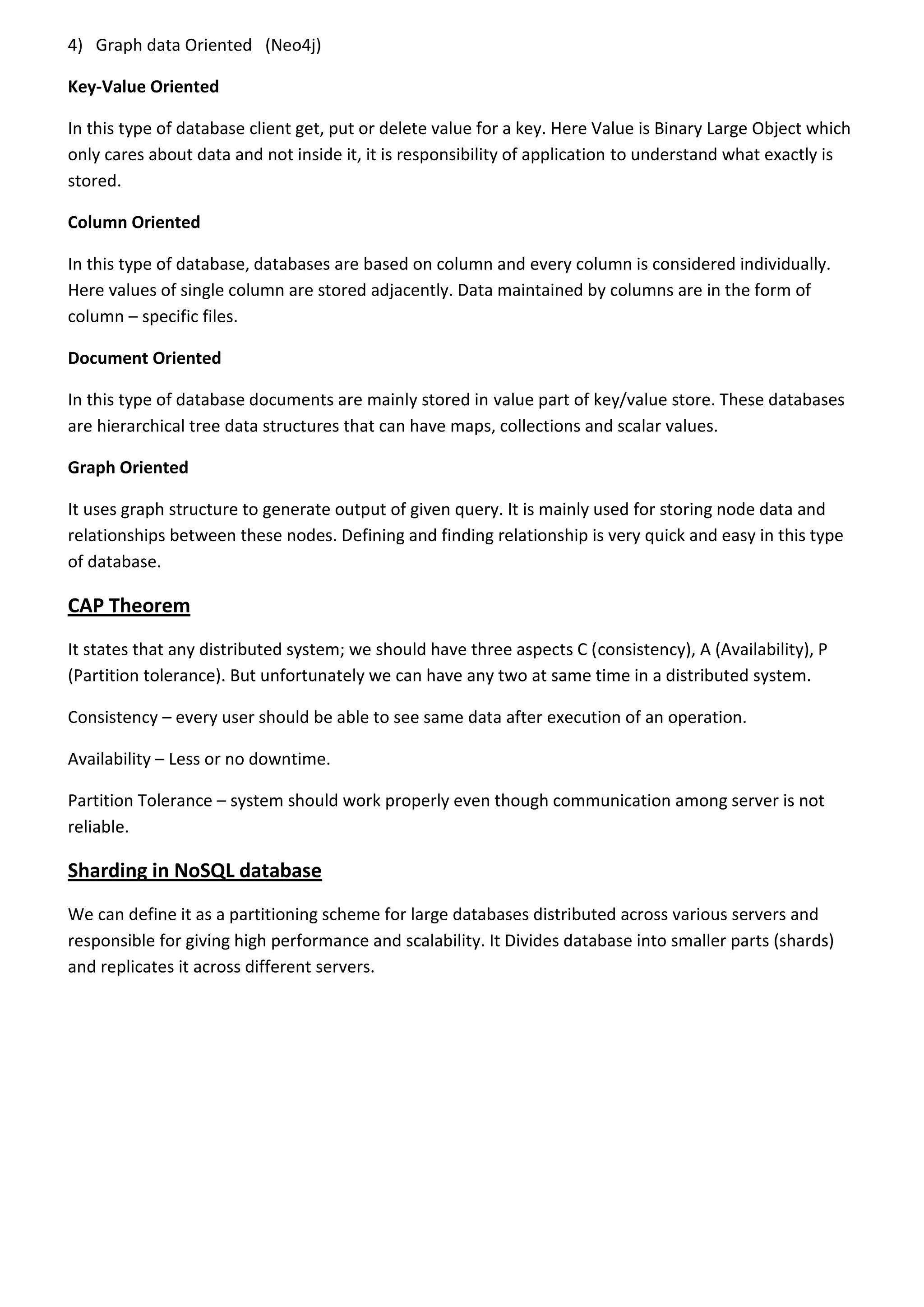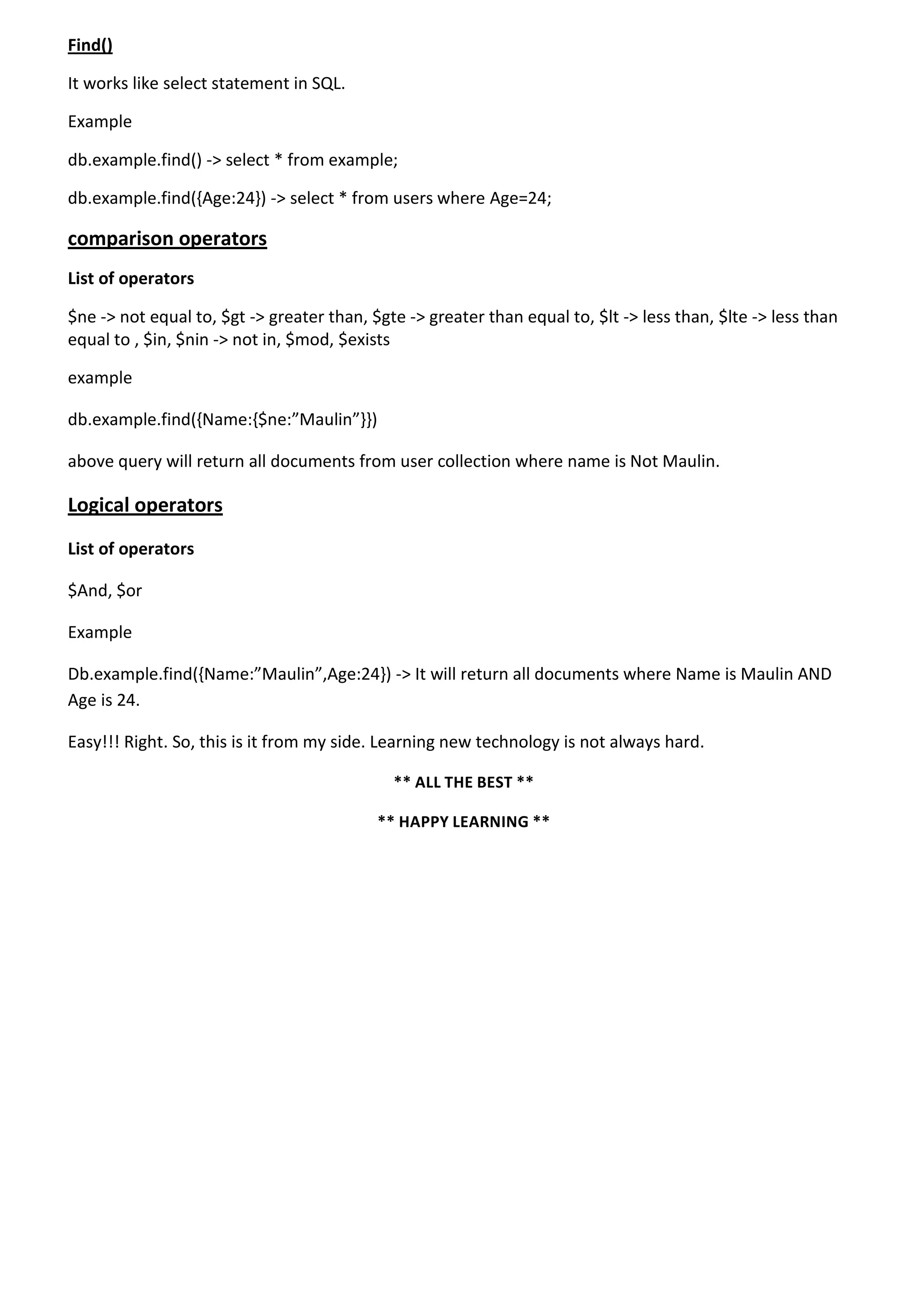This document provides an introduction and overview of NoSQL concepts and MongoDB database. It begins with the purpose of guiding beginners and discusses how the growth of data led to the development of NoSQL technologies. It then covers the history of databases, defines key terms, and describes the different types of NoSQL databases like key-value, column-oriented, document-oriented and graph oriented. Specifics about MongoDB are provided, including conceptual understanding, basic operations like insert and find, and comparison operators. The document aims to make learning MongoDB and NoSQL easy and fun for beginners.



![MongoDB Learning MongoDB is quite easy and fun. MongoDB is Document-Oriented database; it is open source NoSQL database. We can use it as alternative of RDBMS. It can give high performance by using with more specialized NoSQL databases. Conceptual Understanding of MongoDB 1) MongoDB has same concept like schema in Oracle SQL; within a MongoDB instance (like SQL schema) you can have zero or more database, each acting as high level container for everything else. 2) Collection in MongoDB is same as tables in RDBMS. MongoDB can have zero or more collection in it. 3) Document is MongoDB can be seen as row in RDBMS. Collections are made of zero or more documents. 4) Fields in MongoDB can be seen as Column in RDBMS. Document can have zero or more fields in it. 5) Indexes concept is same as in SQL. 6) Cursor in MongoDB is new concept which is used when we ask MongoDB for data it returns a pointer to a result set which is called cursor. Basic operations in MongoDB Let’s start playing with MongoDB. Insert() db.User.insert[{_id=1,FName:”Maulin”,Lname:”Shah”,address:{street:”Shyamalcrossroad”, city: “Ahmedabad”, zipCode:380015},Phone:[8980162257,9409032647]}, {_id=2,FName:”Paresh”,Lname:”Patel”,address:{street:”kharadigate”, city: “Surat”, zipCode:300018},Phone:[8089612275]}] If we do not have any collection insert() will create one.(!!! Interesting?), here, if we don’t specify id field MongoDB will generate id by itself as Object id. (wow!!) DATABASE COLLECTIONS DOCUMENTS FIELDS](https://image.slidesharecdn.com/articlemaulinshah-160915190708/75/Beginner-s-guide-to-Mongodb-and-NoSQL-4-2048.jpg)
